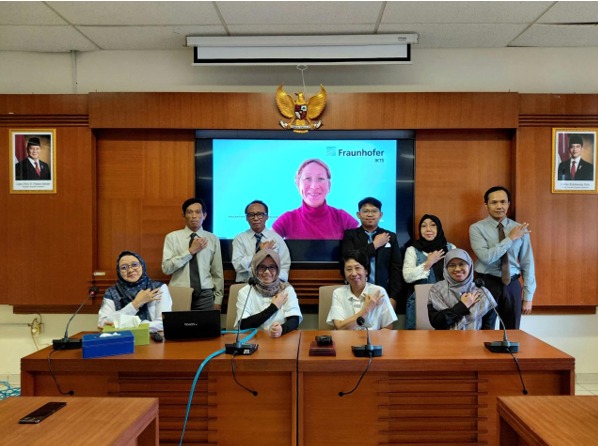
Periodontitis, or chronic gum inflammation, remains a significant dental health issue, affecting up to 74% of the population. This disease not only causes gum inflammation but also damages the supporting tissues of teeth and gradually destroys the jawbone. If left untreated, teeth can loosen and eventually fall out.
One medical approach to treating bone damage caused by periodontitis is Guided Bone Regeneration (GBR), a surgical technique that uses a barrier membrane to protect the area of bone being regenerated.
However, existing membranes present limitations: non-resorbable types require a second surgery for removal, while resorbable ones often degrade too quickly before optimal tissue growth occurs.
Addressing this challenge, Muhammad Hidayat Syahruddin, a doctoral student at the Faculty of Dentistry, Universitas Gadjah Mada (FKG UGM), developed a “smart” GBR membrane using 3D printing technology with a honeycomb structure.
The membrane is made primarily from poly-L-lactic acid (PLLA), a biocompatible material that gradually degrades in accordance with tissue growth.
The innovation is further enhanced by a layer of silver-ion carbonate apatite (Ag-CHA) combined with polyvinyl alcohol (PVA) to improve flexibility and water absorption.
The silver ions provide a natural antibacterial effect, protecting the healing area from infection, which commonly occurs in the oral cavity.
“This membrane has been proven to inhibit and kill six major types of bacteria that cause periodontitis, including Porphyromonas gingivalis,” said Syahruddin on Tuesday, Aug. 5, 2025.
According to Syahruddin, the innovation he developed enables the creation of a smart membrane that promotes bone growth, protects against bacterial infection, degrades in a controlled manner, is safe to use, and eliminates the need for additional surgery for removal.
This doctoral research is part of the Master’s-to-Doctorate for Outstanding Undergraduate Students (PMDSU) program, which Syahruddin has been enrolled in since 2022.
He is supervised by Professor Ika Dewi Ana as the main advisor, along with co-promotors Dr. Rahmi Anggraeni from the National Research and Innovation Agency (BRIN), Dr. Dyah Irnawati, and Dr. Natalia Beshchasna from the Fraunhofer Institute for Ceramic Technologies and Systems (IKTS), Germany.
Syahruddin’s dissertation continues UGM’s ongoing research on engineering carbonate apatite (CHA) for antibacterial functionality.
“UGM already possesses proven and downstreamed CHA-based technologies across various innovation products. Syahruddin developed silver ion substitution in CHA to coat the designed membrane. In the future, development may focus on self-assembled surfaces so the membrane can autonomously adapt to protect the healing area during bacterial attacks,” said Professor Ana.
Professor Widowati Siswomihardjo, Head of the Doctoral Program in Dental Sciences at UGM, added, “This research opens up opportunities for the development of safer, more effective, and more comfortable treatments for infections such as periodontitis and other dental implant applications. We hope this technology will become a breakthrough for dentists and patients in the future. This is what we always emphasize to our students: Let us start from the end. Think about the real contributions your research can offer to society.”
Author: Kezia Dwina Nathania
Editor: Gusti Grehenson
Post-editor: Lintang Andwyna

